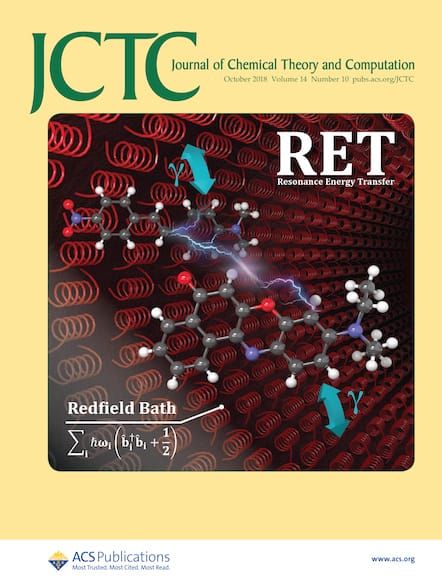基于轨迹表面跳变的激光诱导电子相干演化建模。
IF 5.5
1区 化学
Q2 CHEMISTRY, PHYSICAL
引用次数: 0
摘要
目前的阿秒XUV/ x射线脉冲和几秒UV脉冲,带宽高达几个eV,可以激发分子的相干叠加电子状态。后续动力学的理论建模需要考虑电子和原子核的耦合运动,以捕捉初始电子相干、核运动引起的退相干和可能在锥形相交处出现的额外相干之间的微妙相互作用。在这项工作中,我们引入了具有投射力和动量的轨迹表面跳变(TSH-PFM),它以一种数值上便宜的方式解释了这些影响,因此特别适合描述由初始相干电子态叠加引起的分子动力学。通过与先前报道的BMA[5,5]、对二甲苯和氟烯分子的全维量子力学结果进行比较,我们证明了它的性能。对甘氨酸分子的TSH-PFM方法的应用表明,在动力学的早期阶段,初始电子相干可以对分子上的电荷分布产生巨大的影响。本文章由计算机程序翻译,如有差异,请以英文原文为准。
Modeling the Evolution of Laser-Induced Electronic Coherences with Trajectory Surface Hopping.
Current attosecond XUV/X-ray pulses and few-fs UV pulses, with bandwidths up to several eV, can excite molecules in a coherent superposition of electronic states. Theoretical modeling of the ensuing dynamics requires accounting for the coupled motion of electrons and nuclei to capture the subtle interplay between the initial electronic coherence, decoherence induced by nuclear motion, and additional coherences that may emerge at conical intersections. In this work, we introduce Trajectory Surface Hopping with Projected Forces and Momenta (TSH-PFM), which accounts for these effects in a numerically inexpensive way and, therefore, is particularly suited to describe molecular dynamics arising from an initial coherent superposition of electronic states. We demonstrate its performance by comparing with previously reported quantum mechanical results for the BMA[5,5], para-xylene, and fulvene molecules by working in full dimensionality. Application of the TSH-PFM method to the glycine molecule shows that the initial electronic coherences can have a dramatic impact in the charge distribution over the molecule at the very early stages of the dynamics.
求助全文
通过发布文献求助,成功后即可免费获取论文全文。
去求助
来源期刊

Journal of Chemical Theory and Computation
化学-物理:原子、分子和化学物理
CiteScore
9.90
自引率
16.40%
发文量
568
审稿时长
1 months
期刊介绍:
The Journal of Chemical Theory and Computation invites new and original contributions with the understanding that, if accepted, they will not be published elsewhere. Papers reporting new theories, methodology, and/or important applications in quantum electronic structure, molecular dynamics, and statistical mechanics are appropriate for submission to this Journal. Specific topics include advances in or applications of ab initio quantum mechanics, density functional theory, design and properties of new materials, surface science, Monte Carlo simulations, solvation models, QM/MM calculations, biomolecular structure prediction, and molecular dynamics in the broadest sense including gas-phase dynamics, ab initio dynamics, biomolecular dynamics, and protein folding. The Journal does not consider papers that are straightforward applications of known methods including DFT and molecular dynamics. The Journal favors submissions that include advances in theory or methodology with applications to compelling problems.
 求助内容:
求助内容: 应助结果提醒方式:
应助结果提醒方式:


